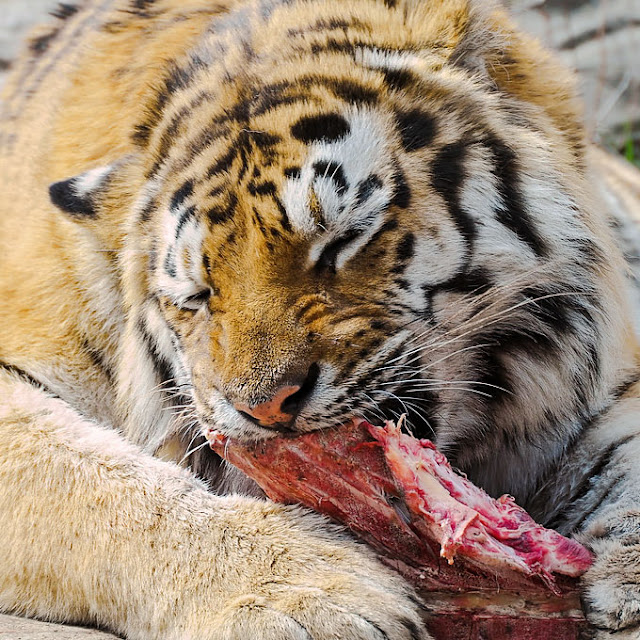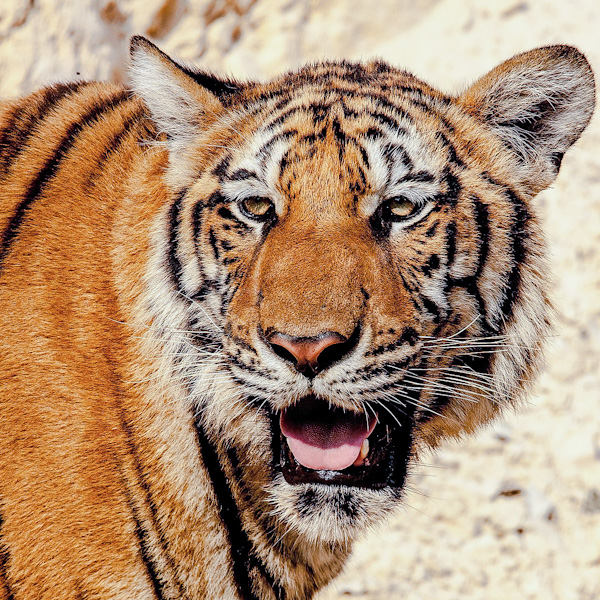Hunting success rate of tigers
Dr Desmond Morris, in his book Cat World tells us that the hunting success rate of tigers is about 1 in 20 or 5%. Clearly a poor success rate. He also tells us that a female with cubs has a better success rate because of the urgency to feed her cubs. He puts it at a 1 in 5 chance or 20%.
 |
| Tiger eating. Photo on Flickr and by Tambako The Jaguar |
The internet tells me that the success rate is 10% or between 5% and 10% depending on the source. However way you cut it, the success rate is low. This accounts for why tigers are careful eaters leaving little of its prey for scavengers. And they gulp down as much as 30 kg or 66 pounds of meat at a single sitting. When it has finished it may stay with the partly eaten body of its prey until it becomes hungry again and then continue. Alternatively a tiger may cover the carcass with leaves and branches hiding it from predators and scavengers. It can then return for a second meal.
The tiger also has to travel long distances to find and kill prey. They can travel approximately 30 km per day or night. Some reports say they travel up to 60 km a day and some report 16 to 32 km per night. The information is sparse but let's say that they travel long distances which probably contributes to making them cautious about protecting their kills.




Comments
Post a Comment
Please comment.